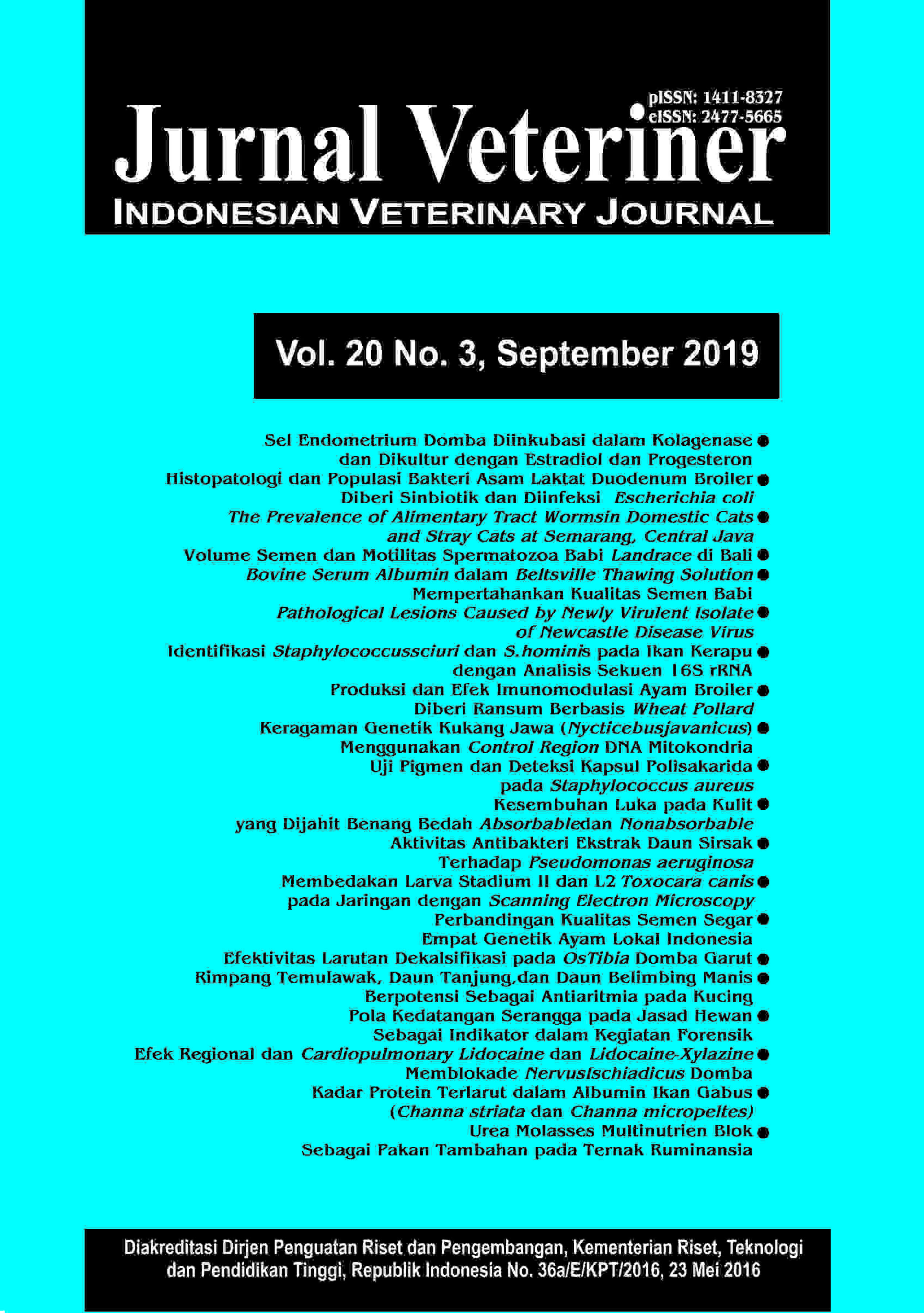Uji pigmen dan deteksi kapsul polisakarida pada Staphylococcus aureus isolat asal broiler PIGMENT TEST AND DETECTION OF POLISAKARIDA CAPSULES ON Staphylococcus aureus ISOLAT BROILER
Abstract
Staphylococcus aureus is a pathogenic bacterium causing disease in humans and animals. In broilers it cause septicemia, tendosinovitis, dermatitis, endocarditis, wound infections and arthritis and bumblefoot. The ability of Staphylococcus aureus to cause disease depends on the virulence factors they bear. The purpose of this research is to investigate the distribution of pigment production type and the existence of genes of polysaccharide capsule phenotype and genotype as determinant factor of virulence of bacteria on 15 isolates of Staphylococcus aureus from broiler. Pigment production test showed that 86.7% of isolates producing yellow pigment and 13.3% isolates produce orange pigment. The detection of polysaccharide capsules was phenotypically performed with hydrophobicity test with serum soft agar medium (SSA) showed 53.3% isolate grow compact and 46,7% isolate grown difuse and hydrophobicity test by salt aggregation test method (SAT) showed 66,7% hydrophil and 33.3% are hydrophobic. Genotype detection of polysaccharide capsule genes by polymerase chain reaction (PCR) showed 66.7% detected cap5 (amplicon 361bp) and 33.3% detected cap8 (173bp ampliole). The type of pigment production and the presence of polysaccharide capsules are some of the virulent factors in Staphylococcus aureus.



















